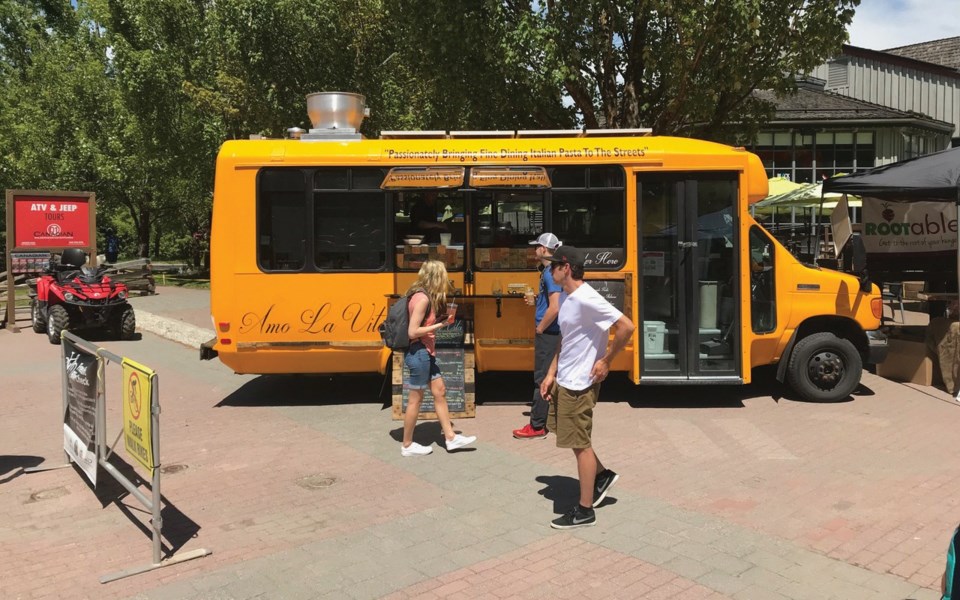#BuyCanadian is totally trending these days for good reason—and it's one more great reason to shop your local farmers' market, wherever you live.
Rain or shine, good day or bad, a visit to your favourite friendly farmers' market is a feast of the first order, and the best way to buy local, eat well and live even better. It's also an excellent way to connect young ones with the real world.
I'll never forget buying veggies at a neighbourhood store once and a little guy who couldn't have been more than 10 picked up a pea pod and ran to show it to his mom. "What's this?" he asked with full-blown curiosity.
Sure, we can all connect to the heart of food just by following the "fresh is best" mantra, which, in a regular grocery store, means shopping the outer perimeter and avoiding the packaged, processed and frozen foods in the centre aisles. That poor kid in the neighbourhood store had apparently only seen peas coming out of a tin or a bag from the freezer.
But budding young curiosities aside, other than growing or raising it yourself, the richest way to understand what you're eating on all levels—from how best to prepare it to how and when and why it has been produced—is dealing directly with the farmers and ranchers who do all the hard work for us. And it's good for you, too. A U.S. Department of Agriculture survey found that families who have access to farmers' markets eat an average of 1.4 more servings of fruits and veggies a week.
The other great thing you do when you buy direct from local farmers is help protect our Agricultural Land Reserve. The ALR—set up, I remind us all, by Dave Barrett's fearless, game-changing NDP government in 1973—protects some 4.6 million hectares of agriculturally sustainable land across B.C.
In the 1960s and '70s, about 6,000 hectares of prime agricultural land were being lost each year to urban growth—a threat that's only increased. Plus these land reserves are all the more precious as the Orange Menace south of the border rages on, provoking upset and confusion around the world. More than ever, global trade wars mean that a sustainable, local food supply isn't just a "nice" Canadian idea.
On the economic front, according to a study done by the University of Northern B.C., farmers' markets generate more than $170 million annually for our province, a growth of 147 per cent from 2006 to 2012. The average spend at markets is $28 a week, a 23-per-cent increase over the years. And when you spend a buck on a B.C. business, 70 cents stays in the community or region, compared to only 43 cents when you shop at an international chain.
Bonus: farmers' markets themselves are bastions of sustainability. Whistler's has been working with AWARE for years to spread best practices in that regard, like how to source compostable containers. They're also tremendous small business incubators. For instance, Amo La Vita has built a totally sustainable food truck over the past two years, keeping supplies as local, Canadian and sustainable as possible. Even the grain for the pasta flour is from Canada. The truck itself is powered with solar panels. And Laughing Crow Organic Farm in Pemberton started out five years ago just one day a week with mixed greens and they now run three tents, full on, with a range of beautiful organic produce, including okra, that blows people's minds.
"They've got vegetables I've never seen before and they're teaching us how to eat," says Chris Quinlan, Whistler's market manager for the past eight years.
Right now in B.C., we have more than 100 farmers' markets, from Fort St. John to the Gulf Islands. There's definitely one just down the road from you. (For farmers' markets in Sea to Sky and how to find them, check out the details below.)
For anyone who's spent time at Whistler's market, you know that one of the very best is right in our own backyard.
Since 2010, when Chris started, Whistler's market has outdone the provincial average, more than doubling the number of vendors and visitors. You'll find maybe 15 to 20 new vendors each year throughout the season, and expect to see as many as 85 vendors on a Sunday when it's top of the season and the market is hopping with some 6,000 to 7,000 visitors throughout the day. But more important is the diversity of offerings.
"The farms we've got have increased their capacity so much—the quality is just incredible," he says. June 17 was the first full-season market, with five farms, each with a full complement and ready to go.
"It's great! They're not just doing one stand—they're doing double and triple booths which is amazing, so that's always really good to see."
With all the fresh-baked goods, sweet treats, the handmade artisan crafts, clothes, home and health products, super craft brews and food trucks on hand at Whistler for market day, you've got yourself a full plate of good offerings and good times.
You'll even find peas in a pod. Canadian ones. Enjoy!
Whistler Farmers' Market
Located in Upper Whistler Village.
Sundays: May to October, 11 a.m.-4 p.m.
Wednesdays: July and August, 2-7 p.m.
Holiday Saturdays: June 30, Aug. 4, Sept. 1, Oct. 6, 11 a.m.-4 p.m.
See whistlerfarmersmarket.org for full details, including maps of vendor locations each day.
Pemberton Farmers' Market
Located in the Community Barn in Downtown Pemberton, every Friday, 3 to 6 p.m., until Oct. 26.
See pembertonfarmersmarket.com for full details.
Squamish Farmers' Market
Located at Cleveland Ave. and Victoria in the heart of town, every Saturday, 10 a.m. to 3 p.m., until Oct. 27.
See squamishfarmersmarket.com for full details.
Glenda Bartosh is an award-winning journalist who visited her first farmers' market in Edmonton when cabbage was the hot item. She writes in this space every second week.




